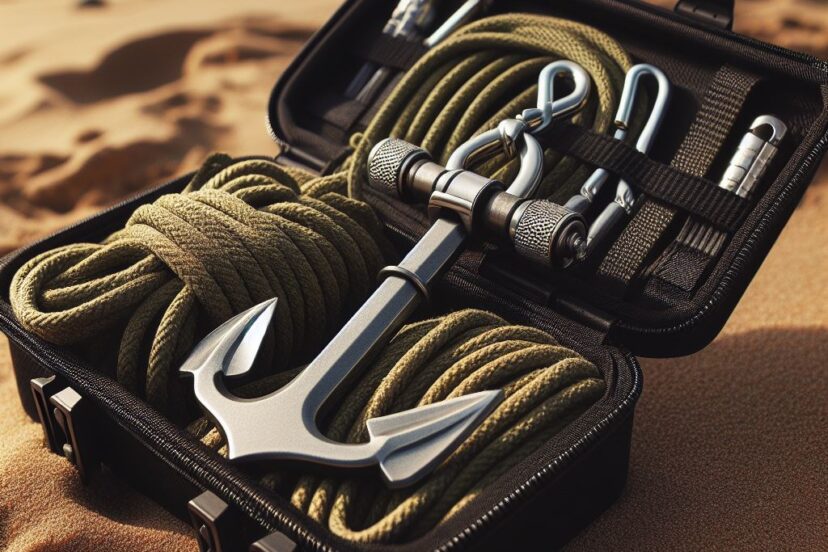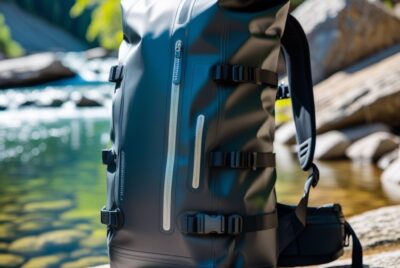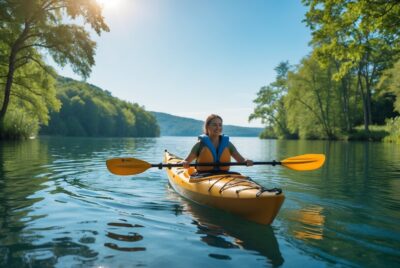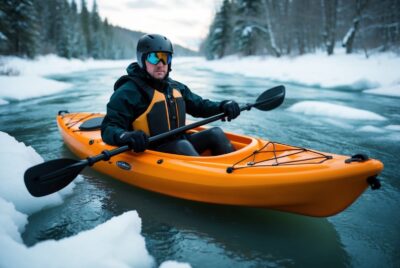Kayak Anchor System Mastery: Techniques, Tips, and Tricks
*We may earn a commission for purchases made using our links. Please see our disclosure to learn more.
Kayak Anchor System Mastery: Full Guide
As someone who’s spent countless hours kayaking, I can’t stress enough the importance of a good kayak anchor system. Whether you’re fishing, photographing, or just taking a break, a reliable anchor system is key to a stable and enjoyable experience. In this comprehensive guide, I’ll take you through everything you need to know about kayak anchors, from choosing the right type to setting it up and maintaining it.
Understanding Kayak Anchors
Kayak anchors come in various shapes and sizes, each designed for specific conditions. The most common types are:
- Grapnel Anchors: Ideal for rocky or coral bottoms. Their folding arms grip onto rough surfaces effectively.
- Mushroom Anchors: Best for muddy or silt bottoms. Their shape allows them to bury into the soft substrate.
- Sandbag Anchors: Great for sandy or gravel bottoms. They drag and create resistance to hold the kayak in place.
Each type has its pros and cons. For instance, grapnel anchors offer excellent hold but can be tricky to retrieve if they get too entangled. Mushroom anchors are easier to manage but might not hold as firmly in rougher conditions.
Choosing the Right Anchor for Your Kayak
Selecting the right anchor depends on several factors:
- Kayak Size and Weight: A heavier or larger kayak will need a sturdier anchor.
- Water Conditions: Calm lakes require different anchors than choppy seas.
- Bottom Conditions: The type of seabed (rocky, sandy, muddy) influences the anchor choice.
I usually carry different types of anchors when I’m uncertain about the conditions I’ll encounter.
Kayak Anchor System Components

A typical kayak anchor system includes:
- Anchor: The primary component that holds your kayak in place.
- Rope and Line: This connects the anchor to your kayak. The length should be several times the depth of the water.
- Buoy: A floating device that marks your anchor’s location.
- Tie-off Points: Secure points on your kayak where the anchor line is attached.
Setting up these components correctly is crucial for a safe and effective anchoring.
Setting Up Your Anchor System
Here’s a simple guide to setting up your anchor system:
- Attach the Line to the Anchor: Use a strong knot like a bowline.
- Fix the Line to Your Kayak: Tie the other end of the line to a secure point on your kayak.
- Deploy the Anchor: Gently lower the anchor overboard, ensuring it reaches the bottom.
- Set the Anchor: Move your kayak slightly to ensure the anchor grips the bottom.
Always remember safety. Wear a life jacket and avoid anchoring in high traffic areas or very deep water.
Anchor Positioning and Techniques
Positioning your anchor correctly can make a big difference. For instance, in flowing water, anchor upstream to maintain stability. In windy conditions, face the wind to minimize drifting. I’ve found that experimenting with different positions helps in understanding what works best in various conditions.
Maintenance and Care
Proper maintenance and care of your kayak anchor system are crucial for its longevity and effectiveness. After each use, especially in saltwater, it’s important to rinse your anchor and line with fresh water to prevent corrosion and buildup of debris. Regularly inspect your gear for signs of wear, such as frayed lines or rust on the anchor, and address any issues promptly to ensure safety. When storing your anchor system, choose a dry and cool place to prevent damage to the materials.
This routine care not only extends the life of your anchor system but also ensures it’s ready and reliable for your next kayaking adventure.
Troubleshooting Common Issues
Even with the best setup, you might encounter issues like drifting or snagging. Here’s how I deal with them:
- Drifting: If you’re drifting, your anchor may not be properly set. Try repositioning it or using a heavier anchor.
- Snags: If your anchor gets stuck, try changing the angle of pull or using a quick-release mechanism.
These tips have saved me from a few tricky situations on the water.
Advanced Tips for Using a Kayak Anchor System
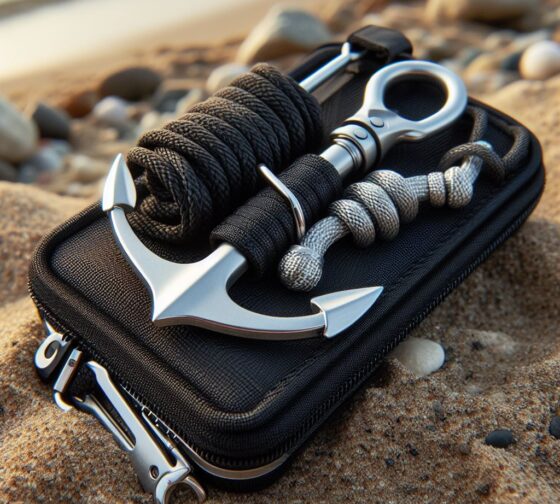
For seasoned kayakers looking to enhance their anchoring skills, there are several advanced tips and tricks to consider. Mastering anchoring in current is crucial; using a heavier anchor and extending more line can significantly improve stability in strong currents. This ensures your kayak remains stationary, providing a safer and more enjoyable experience. Another effective strategy is the use of multiple anchors. Deploying two anchors, preferably at different angles, can provide better stability, especially in changing conditions like shifting winds or tidal movements. This technique is particularly useful in areas where the water movement is unpredictable.
Additionally, understanding the nuances of different seabed types and how your anchor interacts with them can greatly improve your anchoring effectiveness. For instance, in a rocky environment, a grapnel anchor might be your best choice, while in soft, muddy conditions, a wider, fluke-style anchor could offer better hold. These advanced techniques, when practiced and applied correctly, can make a substantial difference in your kayaking adventures, enabling you to tackle a wider range of conditions with confidence and expertise.
Personal Experiences and Stories
I’ve had my share of adventures with different anchors. Once, while fishing in a coastal inlet, my grapnel anchor saved me from drifting into rough seas. Another time, my sandbag anchor was perfect for a lazy day on a sandy lakebed. These experiences have taught me the value of choosing the right anchor for the situation.
Must-Have Accessories
Some accessories that I find indispensable for anchoring are:
- Anchor Trolley: Allows you to adjust the anchor point along the side of your kayak.
- Quick Release Mechanism: Useful for releasing your anchor quickly in emergencies.
- Dry Bag: Keeps your anchor system and other gear dry and organized.
Investing in these accessories can enhance your kayaking experience significantly.
Safety Precautions
Safety should always be your top priority. Besides wearing a life jacket, make sure to anchor in safe locations, be aware of weather changes, and have a plan for emergencies. Safety is not just about gear; it’s also about making smart decisions on the water.
Conclusion
A reliable kayak anchor system is a game-changer for any kayaking enthusiast. From choosing the right anchor to maintaining and using it effectively, each aspect is crucial for a safe and enjoyable time on the water. Remember, the right preparation and knowledge can make all the difference.
FAQs
- What is the ideal length for a kayak anchor line? The general rule is 7 to 10 times the depth of the water you’re anchoring in.
- Can I use the same anchor for different types of water bodies? While some anchors are versatile, it’s best to choose an anchor suited to the specific conditions.
- How do I know if my anchor is properly set? After dropping the anchor, gently tug the line. If it feels firm, the anchor is likely set.
- What should I do if my anchor gets stuck? Try pulling from different angles. If that fails, a quick-release mechanism can be invaluable.
- Are there environmentally friendly anchors? Yes, some anchors are designed to minimize impact on the seabed. Look for eco-friendly options.

